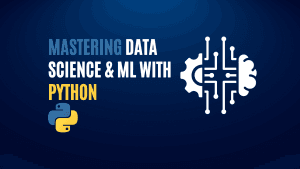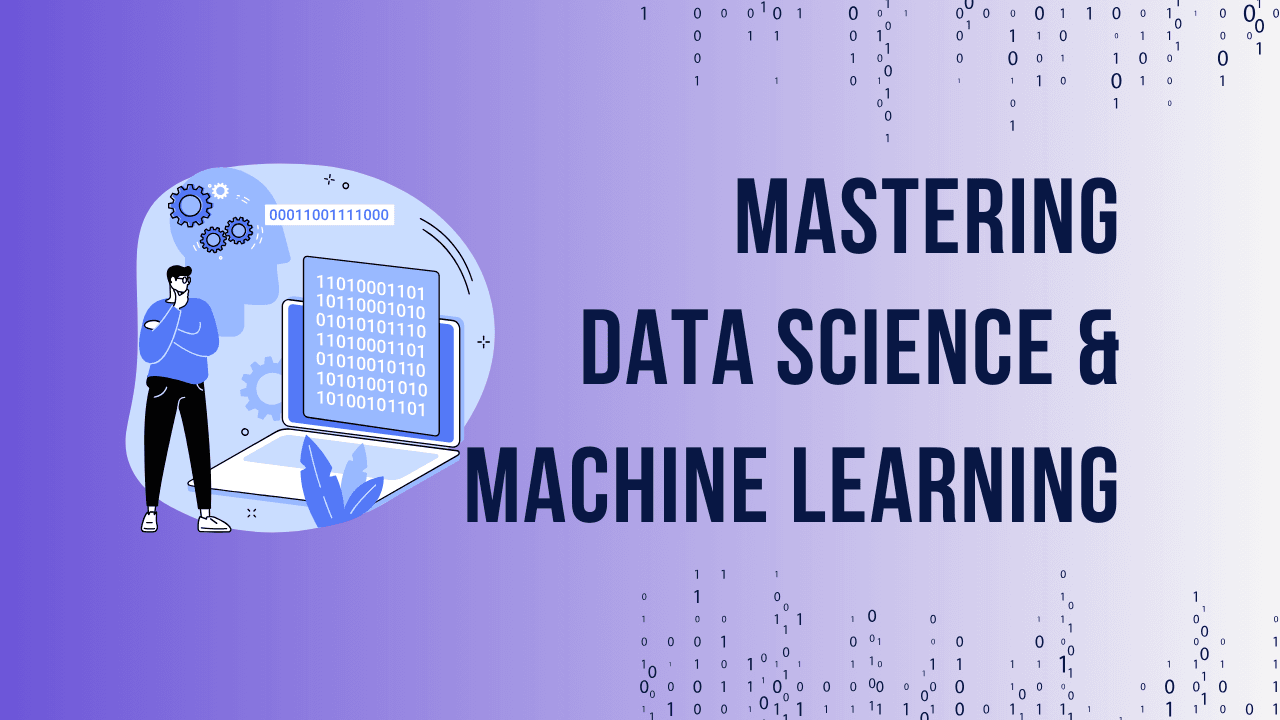In today’s competitive job market, landing a role as a data scientist at Amazon requires not only a strong foundation in data science but also the ability to tackle challenging interview questions. Here, we have compiled the top 12 interview questions that candidates should expect when applying for a data science role at Amazon, along with expert tips on how to answer them.
1. What is the difference between supervised and unsupervised learning?
Supervised learning is when the model is trained on labeled data, meaning that each input has a corresponding output. The model learns to predict outputs from given inputs based on this dataset. Common algorithms include Linear Regression, Decision Trees, and Random Forest.
In contrast, unsupervised learning deals with data that doesn’t have labeled outcomes. The goal here is to identify hidden patterns within the dataset. Popular unsupervised algorithms include K-means clustering and Principal Component Analysis (PCA).
2.Explain the concept of overfitting and how to avoid it.
Overfitting occurs when a model learns the training data too well, capturing noise along with the signal. As a result, it performs poorly on unseen data because it fails to generalize. This issue typically arises when the model is overly complex.
Techniques to Avoid Overfitting:
- Cross-validation: Use K-fold cross-validation to ensure the model’s performance is tested on various subsets of the data.
- Regularization: Techniques like L1 (Lasso) and L2 (Ridge) regularization can reduce the complexity of the model by penalizing large coefficients.
- Pruning (for trees): In decision trees, prune branches that have little importance to prevent the model from growing too complex.
- Dropout (for neural networks): Randomly drop neurons during training to prevent the model from becoming overly reliant on specific paths.
Ready to take you Data Science and Machine Learning skills to the next level? Check out our comprehensive Mastering Data Science and ML with Python course.
3.Describe how you would handle missing data in a dataset.
Missing data is a common issue in data science, and how you handle it can significantly affect model performance. There are several strategies for dealing with missing values:
- Imputation: Fill missing values using mean, median, or mode for numerical variables. For categorical variables, the most frequent category can be used.
- Prediction Models: Build a model to predict missing values based on the available data.
- Delete Rows or Columns: If a small number of values are missing, simply remove those rows or columns.
- Use Algorithms That Handle Missing Data: Some machine learning algorithms like XGBoost can handle missing data natively.
4. How would you explain logistic regression to a non-technical stakeholder?
Logistic regression is a statistical method used to predict binary outcomes (such as yes/no or 0/1) based on one or more predictor variables. Instead of predicting a continuous value like linear regression, logistic regression predicts the probability of an event occurring. It uses a logistic function to output values between 0 and 1.
To explain this to a non-technical stakeholder, you could say: “Logistic regression helps us estimate the likelihood of something happening. For example, we can predict whether a customer will make a purchase based on their past behavior.”
5.What is the purpose of A/B testing?
A/B testing is an experimental framework used to compare two versions of a webpage, product feature, or model to determine which performs better. The process involves randomly assigning subjects to two groups: Group A (control) and Group B (treatment). Metrics such as conversion rates or click-through rates are measured to assess the performance of each version.
Ready to take you Data Science and Machine Learning skills to the next level? Check out our comprehensive Mastering Data Science and ML with Python course.
6. How do you approach feature selection?
Feature selection is the process of selecting the most relevant variables for building a model. The goal is to reduce the dimensionality of the data, improve model performance, and reduce computation time.
Common Techniques for Feature Selection:
- Filter methods: Use statistical techniques such as correlation or mutual information to rank features.
- Wrapper methods: Use algorithms like forward selection, backward elimination, or recursive feature elimination (RFE) to evaluate combinations of features.
- Embedded methods: Algorithms like Lasso regression inherently perform feature selection by penalizing irrelevant variables.
7.What is a confusion matrix, and how do you interpret it?
A confusion matrix is a table used to evaluate the performance of a classification model. It compares the predicted values with the actual values and contains four key metrics:
- True Positives (TP): Correctly predicted positives.
- True Negatives (TN): Correctly predicted negatives.
- False Positives (FP): Incorrectly predicted as positive (Type I error).
- False Negatives (FN): Incorrectly predicted as negative (Type II error).
Ready to take you Data Science and Machine Learning skills to the next level? Check out our comprehensive Mastering Data Science and ML with Python course.
8,How would you optimize a machine learning model?
Model optimization is an iterative process aimed at improving the accuracy and performance of machine learning models. Some of the key optimization techniques include:
- Hyperparameter Tuning: Use methods like grid search or random search to find the optimal set of hyperparameters for the model.
- Cross-validation: Ensure the model generalizes well to unseen data by using techniques like K-fold cross-validation.
- Regularization: Penalize large coefficients using L1 (Lasso) or L2 (Ridge) regularization to prevent overfitting.
- Ensemble Methods: Combine multiple models using techniques like bagging or boosting to enhance predictive power.
9. Explain how Amazon uses data science to improve customer experience.
Amazon leverages data science in several ways to enhance customer experience, from personalized recommendations to optimizing delivery routes. Here are a few specific examples:
- Recommendation Engines: Amazon uses collaborative filtering and deep learning models to suggest products based on user behavior and preferences.
- Dynamic Pricing: Amazon adjusts prices in real-time based on demand, competition, and customer profiles using machine learning algorithms.
- Inventory Management: By predicting product demand, Amazon ensures that warehouses are stocked efficiently, minimizing delays and optimizing delivery times.
10. What is the difference between bagging and boosting?
Bagging and boosting are both ensemble methods, but they work in fundamentally different ways:
- Bagging (Bootstrap Aggregating): Multiple models are trained independently on different subsets of the data (with replacement). The final prediction is the average (or majority vote) of all models. Random Forest is a well-known bagging algorithm.
- Boosting: Models are trained sequentially, with each new model attempting to correct the errors made by the previous one. Boosting algorithms include AdaBoost and XGBoost.
11. What metrics would you use to evaluate a machine learning model?
Choosing the right metrics depends on the type of problem you’re solving (classification, regression, etc.). Common evaluation metrics include:
- Accuracy: The proportion of correct predictions out of total predictions.
- Precision: The proportion of true positives out of all positive predictions.
- Recall (Sensitivity): The proportion of true positives out of actual positives.
- F1 Score: The harmonic mean of precision and recall, used when classes are imbalanced.
- Mean Squared Error (MSE): Commonly used for regression problems to measure the average of the squares of the errors.
12. Describe a time you used data to influence business decisions.
This is a behavioral question where you must highlight your experience and analytical skills. Structure your answer using the STAR method:
- Situation: Briefly explain the business context and the challenge you faced.
- Task: Describe your role in the scenario.
- Action: Outline the specific steps you took, including the data science techniques or tools you used.
- Result: Quantify the positive impact your analysis had on the business (e.g., increased revenue, reduced costs, improved customer satisfaction).
Ready to take you Data Science and Machine Learning skills to the next level? Check out our comprehensive Mastering Data Science and ML with Python course.
Our Students Testimonials:
Ready to take you Data Science and Machine Learning skills to the next level? Check out our comprehensive Mastering Data Science and ML with Python course.



